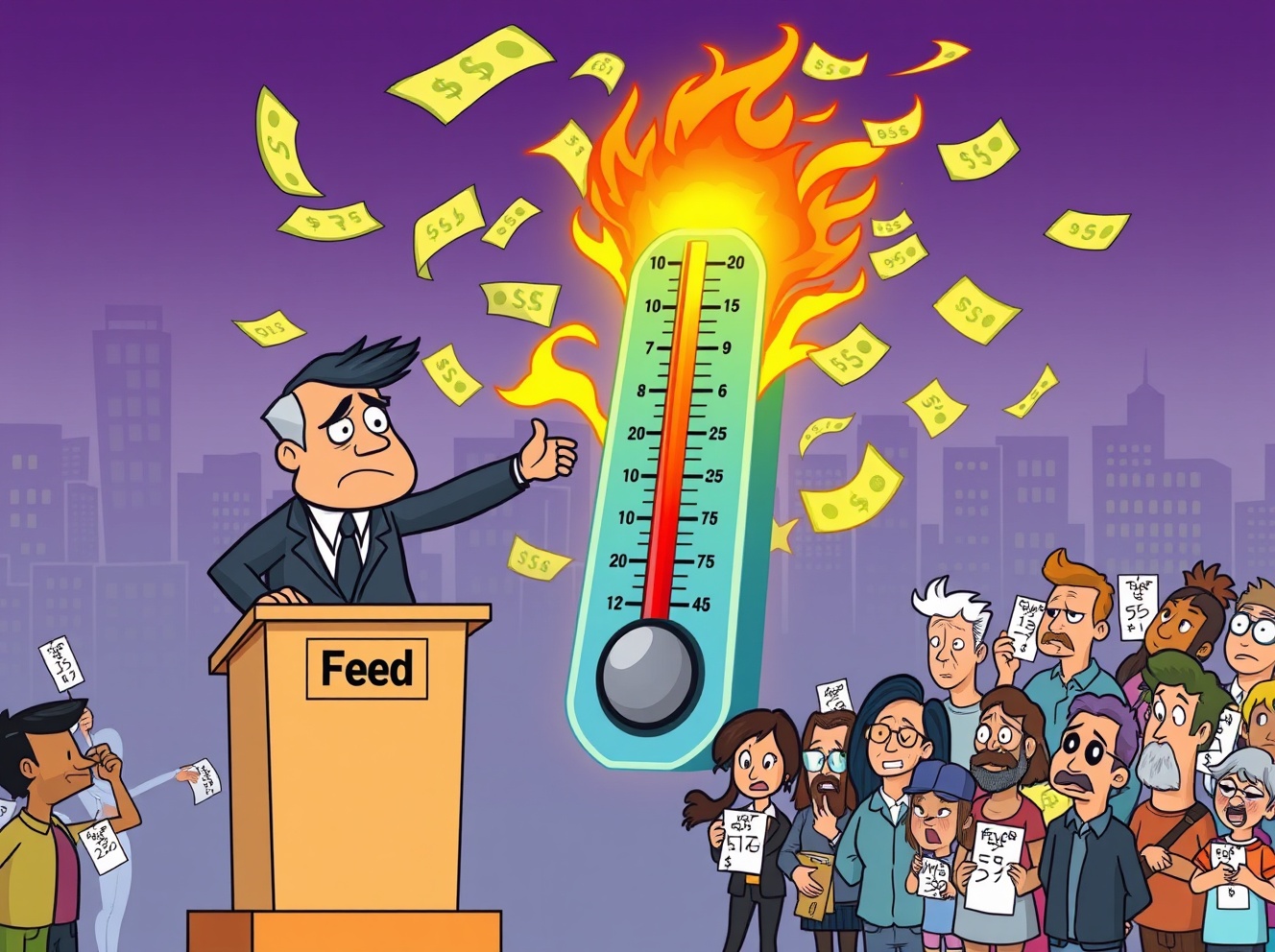Federal Reserve says it will use liquidity injection to stabilize stock markets ‘if needed’

Share:
The Federal Reserve says it’s ready to inject liquidity into the financial system if markets break down. That came straight from Boston Fed President Susan Collins, who told the Financial Times that the central bank “would absolutely be prepared” to act if the situation turns chaotic.
Susan said current conditions look stable for now, and that “markets are continuing to function well.” But she made it clear the Fed isn’t blind to what’s going on. “We’re not seeing liquidity concerns overall,” she said. “But we do have tools to address concerns about market functioning or liquidity should they arise.”
“We have had to deploy quite quickly, various tools,” Susan said, referring to past emergency interventions. “We would absolutely be prepared to do that as needed.” She warned that inflation might stay above 3% this year and said rate cuts wouldn’t be the go-to move if things fall apart.
“The core interest rate tool we use for monetary policy is certainly not the only tool in the toolkit,” said Susan. “And probably not the best way to address challenges of liquidity or market functioning.”
Wall Street is concerned about liquidity issues
Meanwhile, Wall Street is already kind of expecting a Fed bailout. Jamie Dimon, CEO of JPMorgan Chase, said on an earnings call Friday that he sees a potential blow-up coming in the Treasury market. “There will be a kerfuffle in the Treasury markets because of all the rules and regulations,” Jamie said. He expects the Fed to step in eventually, but “not until they start to panic a little bit.”
Volatility has already triggered speculation that hedge funds are closing out a couple of risky bets. One of those is a trade on the price gap between cash Treasuries and futures. The other involves spread trades between Treasury yields and swaps. If those unwind too quickly, it could kill price stability and force another central bank rescue.
The last time that happened was in March 2020, when COVID-19 caused a total breakdown in the Treasury market. Investors pulled out fast, dumping positions and freezing up trading. The Fed had to intervene back then by pledging to buy trillions in bonds and opening up emergency credit for the repo market. Jamie said that without new policy changes, we might see that kind of collapse again.
“When you have a lot of volatile markets and very wide spreads and low liquidity in Treasuries, it affects all other capital markets,” Jamie said. “That’s the reason to do it, not as a favor to the banks.”
One possible fix now being talked about is removing Treasuries from the supplementary leverage ratio, or SLR, which is part of how bank capital requirements are calculated. That change would allow banks to hold more government debt without it impacting their balance sheets.
“If they do, spreads will come in, there’ll be more active traders,” Jamie said. “If they don’t, the Fed will have to intermediate, which I think is just a bad policy idea.”
Meanwhile Larry Fink, CEO of BlackRock, told CNBC on Friday that he believes the U.S. economy is already near or in a recession. Speaking on “Squawk on the Street,” Larry said growth may have already slipped into the red. “I think we’re very close, if not in, a recession now,” he said.
The fear kicked in after Trump dropped another round of tariffs last week that triggered a sell-off in the stock market and shook investor confidence. Trump then announced a 90-day pause on some import taxes. But Larry said that delay didn’t change anything. “I think you’re going to see, across the board, just a slowdown until there’s more certainty,” Larry said. “And we now have a 90-day pause on the reciprocal tariffs — that means longer, more elevated uncertainty.”
Still though, Larry said he doesn’t think this is the kind of crisis that brings down the whole financial system.
Cryptopolitan Academy: Want to grow your money in 2025? Learn how to do it with DeFi in our upcoming webclass. Save Your Spot
Federal Reserve says it will use liquidity injection to stabilize stock markets ‘if needed’

Share:
The Federal Reserve says it’s ready to inject liquidity into the financial system if markets break down. That came straight from Boston Fed President Susan Collins, who told the Financial Times that the central bank “would absolutely be prepared” to act if the situation turns chaotic.
Susan said current conditions look stable for now, and that “markets are continuing to function well.” But she made it clear the Fed isn’t blind to what’s going on. “We’re not seeing liquidity concerns overall,” she said. “But we do have tools to address concerns about market functioning or liquidity should they arise.”
“We have had to deploy quite quickly, various tools,” Susan said, referring to past emergency interventions. “We would absolutely be prepared to do that as needed.” She warned that inflation might stay above 3% this year and said rate cuts wouldn’t be the go-to move if things fall apart.
“The core interest rate tool we use for monetary policy is certainly not the only tool in the toolkit,” said Susan. “And probably not the best way to address challenges of liquidity or market functioning.”
Wall Street is concerned about liquidity issues
Meanwhile, Wall Street is already kind of expecting a Fed bailout. Jamie Dimon, CEO of JPMorgan Chase, said on an earnings call Friday that he sees a potential blow-up coming in the Treasury market. “There will be a kerfuffle in the Treasury markets because of all the rules and regulations,” Jamie said. He expects the Fed to step in eventually, but “not until they start to panic a little bit.”
Volatility has already triggered speculation that hedge funds are closing out a couple of risky bets. One of those is a trade on the price gap between cash Treasuries and futures. The other involves spread trades between Treasury yields and swaps. If those unwind too quickly, it could kill price stability and force another central bank rescue.
The last time that happened was in March 2020, when COVID-19 caused a total breakdown in the Treasury market. Investors pulled out fast, dumping positions and freezing up trading. The Fed had to intervene back then by pledging to buy trillions in bonds and opening up emergency credit for the repo market. Jamie said that without new policy changes, we might see that kind of collapse again.
“When you have a lot of volatile markets and very wide spreads and low liquidity in Treasuries, it affects all other capital markets,” Jamie said. “That’s the reason to do it, not as a favor to the banks.”
One possible fix now being talked about is removing Treasuries from the supplementary leverage ratio, or SLR, which is part of how bank capital requirements are calculated. That change would allow banks to hold more government debt without it impacting their balance sheets.
“If they do, spreads will come in, there’ll be more active traders,” Jamie said. “If they don’t, the Fed will have to intermediate, which I think is just a bad policy idea.”
Meanwhile Larry Fink, CEO of BlackRock, told CNBC on Friday that he believes the U.S. economy is already near or in a recession. Speaking on “Squawk on the Street,” Larry said growth may have already slipped into the red. “I think we’re very close, if not in, a recession now,” he said.
The fear kicked in after Trump dropped another round of tariffs last week that triggered a sell-off in the stock market and shook investor confidence. Trump then announced a 90-day pause on some import taxes. But Larry said that delay didn’t change anything. “I think you’re going to see, across the board, just a slowdown until there’s more certainty,” Larry said. “And we now have a 90-day pause on the reciprocal tariffs — that means longer, more elevated uncertainty.”
Still though, Larry said he doesn’t think this is the kind of crisis that brings down the whole financial system.
Cryptopolitan Academy: Want to grow your money in 2025? Learn how to do it with DeFi in our upcoming webclass. Save Your Spot










